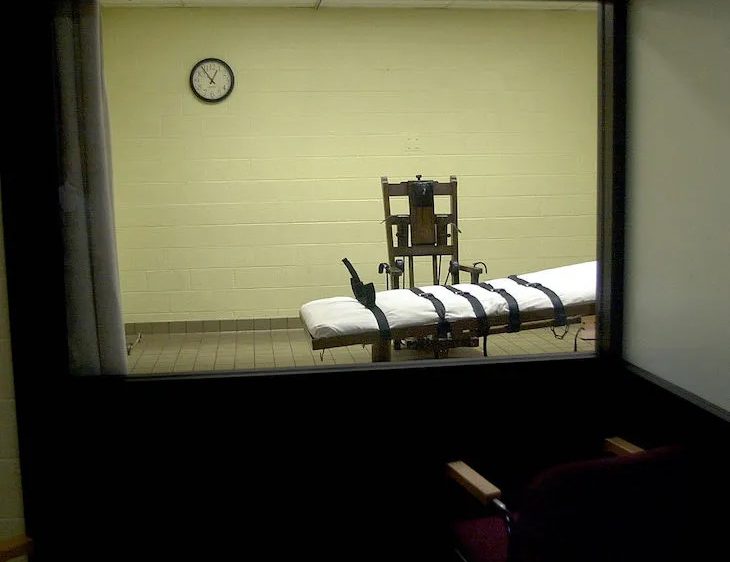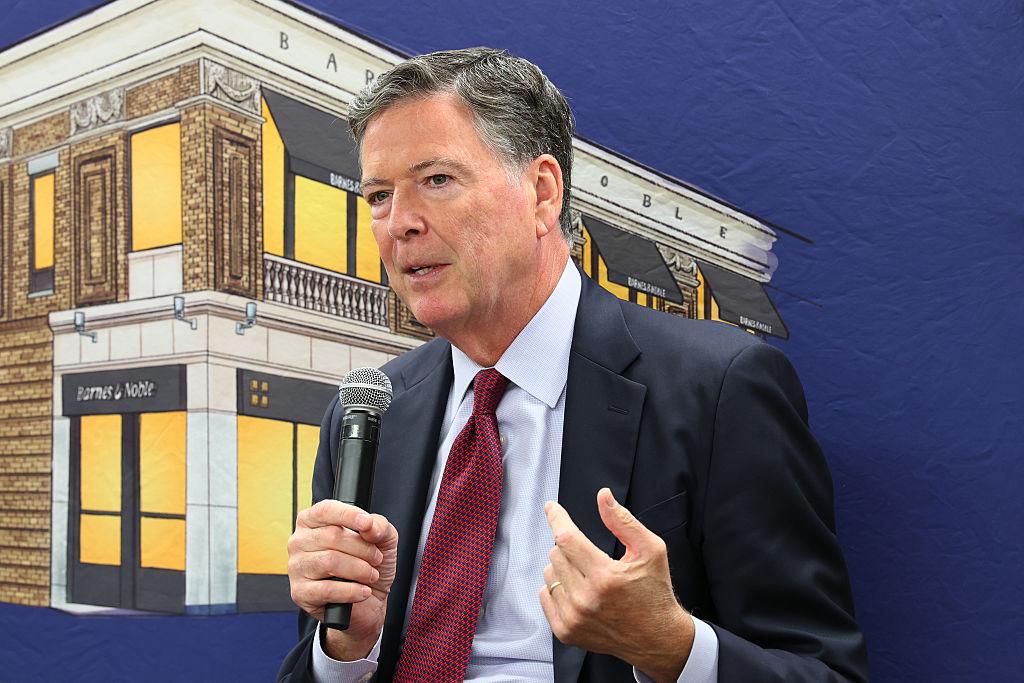Let’s park for a moment the morality of the death penalty. You know what you think. It’s one of those issues that is as divisive as it gets, and along all the predictable lines. It’s the method that exercises me.
Last night, Alabama executed Kenneth Smith by the administration of nitrogen gas. Smith, who murdered a pastor’s wife in 1988, was strapped down as officials put a tight fitting, commercial industrial-safety respirator mask on his face. A canister of pure nitrogen was attached to the mask and set flowing. One local journalist who witnessed the execution said Smith struggled and thrashed about — well as much as the restraints on him made possible — for four or five minutes. Indeed, his struggle for life may have lasted some twenty minutes. Five minutes may not seem a long time, but you just try going without breathing for that long. He eventually suffocated; it is plain that he struggled desperately for air, as we all would have done.
Is that a surprise? Vets in Europe say that nitrogen should not be used to kill large mammals unless they are first sedated; the American Veterinary Medical Association says that rats show signs of panic and distress when given nitrogen. If this is, as the state of Alabama says, “the most humane method of execution known to man,” I should hesitate to witness the alternatives. Actually, we know that the electric chair — another bid to use the latest technology in its day — often didn’t work as intended. Don’t look it up.

Smith had already survived one execution in November 2022, when those attempting to administer a lethal injection couldn’t find a suitable vein, so that was that. Even in old Britain when public executions were popular entertainment there was a principle that the same man could not be hanged twice; if it didn’t work first time, off you went, thanking God for your survival. But Alabama doesn’t even have the tough love of eighteenth century England.
Let’s stick to the question of what method of execution is the least bad. The guillotine has a good deal going for it. Remember, it was devised by one Joseph-Ignace Guillotin as the most humane method of execution available to the French Revolution, and from 1789 to the abolition of the death penalty in France in 1977 this was the standard method. And it was quick. The weighted oblique blade came down on the neck of the victim, who was secured to ensure that it would land in the right place. Death was as instantaneous as possible. Granted, it looks a little theatrical, but if I were Kenneth Smith, I shouldn’t have hesitated a second before choosing the blade over the exciting experimental approach with nitrogen.
Smith eventually suffocated; it is plain that he struggled desperately for air
Some way behind is hanging. That, too, is quick when it is carried out properly. But to be blunt, it takes skill to do it well, skills absent now: a precise calibration of the weight and height of the prisoner with the drop. Albert Pierrepoint, one of the last executioners in England, had to go through a long apprenticeship before he could do his job properly. And he executed any number of people, from Lord Haw Haw to the Blackout Ripper. But he had professional pride. As he wrote in 1977:
He is a man, she is a woman, who, the church says, still merits some mercy. The supreme mercy I can extend to them is to give them and sustain in them their dignity in dying and death. The gentleness must remain.
It is that respect even to condemned prisoners which was lacking for Kenneth Smith. The point of the death penalty is to kill the prisoner, no? It’s not to torture him. And it doesn’t take a liberal wuss to look at death by nitrogen and see that it is torture.
The reason Alabama deployed this innovative method of execution was because of the difficulty of obtaining the substance of lethal injections (which in any event didn’t work for Smith, not having an obvious vein). But we have quite a range of substances which might have done the job better. Ask Dignitas.
There are any number of methods which any of us would prefer to being gassed. Death by firing squad would be less bad. Or how about a bullet in the back of the neck, the Soviet method? Or simply giving the man a bottle of whiskey and a gun and letting him put the weapon to his mouth? If you are going to kill your convicts, couldn’t you involve them in the decision about the method?
As I say, there are mixed views on the death penalty. I can’t, however, see any scope for debate about this gruesome execution. It is an embarrassment to advocates of the death penalty and a disgrace to Alabama.
This article was originally published in The Spectator’s UK website.


























Leave a Reply